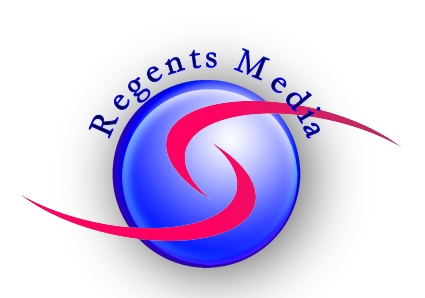Premenstrual Syndrome (“PMS”), a Painful Fact
Premenstrual Syndrome (“PMS”), one of the most under evaluated female afflictions happens to be one of the most commonly recurrent conditions that inevitably disrupts a woman’s sense of well-being. PMS includes both physical and mood changes that occur 3 to 7 days before menstruation.
Why Does Premenstrual Syndrome Happen?!?
To understand, let’s start at the beginning, ergo, the beginning of our cycle.
Our menstrual cycle is dominated by two main hormones, Estrogen and Progesterone.
Estrogen levels begin rising until peaking at ovulation, which is usually in the middle of the menstrual cycle. Once we ovulate, estrogen drops slowly making way for the rising of progesterone. If pregnancy is not achieved and menstruation starts, progesterone levels drop too. This drop in Progesterone levels makes things unpleasant!
Progesterone works to increase Gamma-aminobutyric acid (“GABA”) levels in the brain, thus having a relaxing and calming effect on mood. When GABA drops before menstruation, we may become depressed, irritable, and anxious. We may also suffer from insomnia.
When Estrogen levels drop, so does our mood and with that, cravings for starchy, sweet carbohydrates can rise. Additional symptoms can include bloating, breast pain, achiness, acne, fatigue, headaches, and bowel habit changes.
A word of CAUTION.
It is important to distinguish PMS from depression, anxiety, and premenstrual dysphoric disorder. True PMS starts 5 days before menstruation and resolves 4 days after the start of the menstrual period. PMS also tends to be recurrent, that is it happens in tandem at least 3 consecutive cycles.
Do We Have to Grin and Bear It?
The answer is yes and no. True PMS will resolve each month.
We can, somewhat, alter our commitments to accommodate our symptoms, we should practice more self-acceptance, and self-appreciation, even if no one else does. We must incorporate Potassium, Magnesium, Calcium, Vitamin E, and Vitamin B6 dense foods into our diet before PMS symptoms strike!
The Foods That Help
While there are many ways to treat PMS symptoms, the risk-free benefit that comes from “hacking “into specific vitamins to achieve PMS relief remains an obviously superior choice. If you experience PMS symptoms you may crave high-fat and high-sugar foods like chocolate, biscuits and ice cream, which can cause weight gain.
One can manage her weight and help reduce PMS symptoms by making a few dietary changes. One might like to try eating smaller meals more often – for example, have six ‘mini-meals’ instead of three main meals, or reducing salty foods intake, include more fresh fruits, vegetables, and wholegrain foods, increasing, not keeping high-fat and high-sugar foods at home, making sure to keep tasty and healthy snack alternatives on hand, recording food choices in one’s PMS diary.
List of High Yield Foods
Here is a list of high yield foods:
- Beans like chickpeas and white beans.
- Green leafy vegetables.
- Potatoes and sweet potatoes.
- Avocados.
- Whole grains.
- Tomato products.
- Bananas.
Eat well, you deserve it!!!
Continue on to our posts below and learn about all the vitamins and minerals you’ll need to stay healthy and fabulous!!
Eating Seasonally, Fresh and Flavorful: Lettuce, Discover the 14 Delicious Varieties of Lettuce and Their Remarkable Benefits!!
Eating seasonally, we’ve all heard it before. But why? The answer has multiple facets. Eating this way, we can become more aware of what is fresh and what is not.
Vegan-ize and Energize: Hilarious Hacks for Plant-Based Starbucks Blended Drinks!
Eating seasonally, we’ve all heard it before. But why? The answer has multiple facets. Eating this way, we can become more aware of what is fresh and what is not.
Eating Seasonally, Fresh and Flavorful: The Top Fruits and Vegetables to Buy in July
Eating seasonally, we’ve all heard it before. But why? The answer has multiple facets. Eating this way, we can become more aware of what is fresh and what is not.
Eating Seasonally, Discover the Unbelievable Powers of Vegetables in June, 5 Secrets you Won’t Believe!!
Eating seasonally, we’ve all heard it before. But why? The answer has multiple facets. Eating this way, we can become more aware of what is fresh and what is not.
Eating Seasonally, Juicy June Delights!!
Eating seasonally, we’ve all heard it before. But why? The answer has multiple facets. Eating this way, we can become more aware of what is fresh and what is not.
“Embrace the Bounties of Nature: The May 2023 Guide to Seasonal Eating”
Eating seasonally, we’ve all heard it before. But why? The answer has multiple facets. Eating this way, we can become more aware of what is fresh and what is not.
Magnesium Deficiency. How it Happens, what are the Symptoms and How to Get Back to Normal Fast!
The Vitamin Channel Magnesium Deficiency. How it...
Eating Seasonally, the April Edition!!!
Eating seasonally, we’ve all heard it before. But why? The answer has multiple facets. Eating this way, we can become more aware of what is fresh and what is not.
Potatoes, the Most Spudtacular and Versatile Vegetable in the World!!!
The Vitamin Channel Potatoes, the Most Spudtacular...








